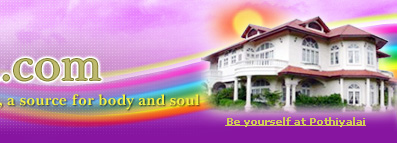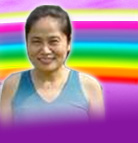 Introduction to Kundalini Massage Therapy
Introduction to Kundalini Massage Therapy
A dynamic class format including centering-relaxation sessions,
lectures, questions and answer sessions, demonstrations of therapeutic
processes and techniques that were described in each module.
Hands-on supervised practice using the latest tools and techniques
learned in class. In addition, practical self-healing techniques
for stress, and tools for well being to help yourself and others
are also covered in class.
This class utilizes a "hands-on" approach.Students learn through
lectures, demonstrations, practice and direct experience utilizing
the most valuable aspects of many holistic approaches to healing.
Upon successful completion of this course, a Diploma will be
awarded as a Massage Therapist. Graduates enter the workplace
in an entry-level position can gain employment in massage offices,
private practice, physicians� offices, hospitals, chiropractic
offices, health clubs, fitness centers, spas and resorts. Students
have the opportunity to continue training and advance to the
next level as an Advanced Massage Therapist.
The first stage will teach you:(All Participants have to
complete 20 hours of a Weekend
Seminar)
Why people get massages?
To relax, reduce stress, relieve muscle soreness and stiffness,
spasms and pain.
Relief of Muscle Soreness, Stiffness, Spasms, and Pain
Our musculoskeletal systems (bones, muscles, and connective
tissue), allow us to move. Without movement, life is markedly
restricted. Our soft-tissue muscle mass is the greatest user
of energy and also one of the primary sources of pain and discomfort.
This discomfort and pain is usually caused by dysfunction of
the musculoskeletal system, which can be the result of a traumatic,
functional, or postural problem. The cause may also be of a
pathological or psychological nature�both of which are acted
out in our body. By loosening and relaxing tight muscles and
joints through massage, the body�s natural movement is freed,
and balance is regained between Chi or life force energy and
the body.
Stress Reduction, Relaxation, and Self-Awareness
In Western cultures body contact is seldom a part of people’s
everyday behavior, and the United States is perhaps the most
non body-oriented culture of all. Our ever-developing technology
allows us to be hooked up to our computers 24 hours a day, seven
days a week. And we have created a world of automated conveniences,
where little movement is required. These features of our modern
lifestyle impair our ability to connect with our bodies, and
a growing number of people are responding to this disconnection
by going to massage therapists for relaxation and stress reduction.
Many body tensions are indications of repressed or unexpressed
holding patterns. They may be the result of lifelong patterns
of tension, or they may be caused by current or past physical
trauma. Simply put, the nature of our reactions to our own unique
environmental stressors is actually captured in our bodies.
Massage therapists act as facilitators or catalysts of change
to the body structure. The therapist works with you to address
habitual holding patterns. Some examples of common holding patterns
are:
- a stiff neck, uplifted chin, and rounded shoulders like
you are carrying the weight of the world on your shoulders.
- a fixed, military chest that takes command, but has little
flexibility.
- a sunken, withdrawn chest that attempts to shield its
owner from life’s stresses.
Most of us have a predominant holding pattern that may be one
of these listed above, and many of us have combinations of holding
patterns. It is the massage therapist�s contact with the body
or movement of the body that allows him or her entry to your
soma-body, which helps you to become whole and integrated once
more. The massage therapist�s goal is to help you gain insight
into your pattern of holding, or lack of flow, and to make you
aware of the increased energy it takes to hold that pattern.
This way you can slowly learn to reduce or eliminate the holding
pattern,which is often a defense mechanism, if in fact, you
are ready to give it up.
Massage has been a part of the major medical delivery systems
all over the world since its inception. During the 19th century,
there was a loss of interest in manual techniques in Western
medicine when pharmaceuticals became a more prominent part of
treatment. Since the early part of the 20th century, however,
we have been experiencing a resurgence of the practice of manual
therapies. More than one in five Americans report having had
a massage from a massage therapist in the past five years.
A landmark 1997 report on public perceptions of alternative
care indicated that thirteen percent of the population reported
receiving one or more massages in the past year, and that those
who did seek massage therapy from a trained professional averaged
seven visits per year.
The Kundalini massage technique combines a variety of scientifically
and empirically developed massage techniques and uses the Kundalini
Energy to heal deep parts of energy blocks caused by stress
and past traumas that are stored in the deeper tissue of the
body. The Kundalini massage technique is applied by the massage
therapist who has learned how to prepare with a very deep connection
using the great method of Ulterior
Kundalini Healing. To best facilitate healing, the practitioner
works with the intention of positively affecting health and
well being. The techniques include holding, causing movement,
and/or applying pressure through stroking the body in a series
of actions that are systematic and rhythmic in nature.
Physician-Patient Relationships and Massage Therapy
In a 1998 study of family physicians, eighty-three percent believed
that massage therapy was a useful adjunct to their own practice
and seventy-one percent had referred patients to massage therapists.
One benefit of a physician referral to a professional massage
therapist is improved healing and relief in patients with musculoskeletal
injuries and chronic pain. Better soma-body awareness increases
your ability to communicate symptoms more accurately and fully
to your physician. As its effects become more widely recognized,
massage will be recommended not only for musculoskeletal problems
and stress relief, but also to improve the patient�s soma-body
awareness throughout the course of an illness. This will especially
be true for patients with chronic disease.
By increasing your proprioceptive awareness (awareness of the
body�s sensations from within) you will improve your ability
to express the effects of conventional therapy and treatment.
Greater ability to advocate for yourself during an illness will
mean better compliance with whatever treatment plan you and
your physician agree upon.
Kundalini Massage
Training

|
|





